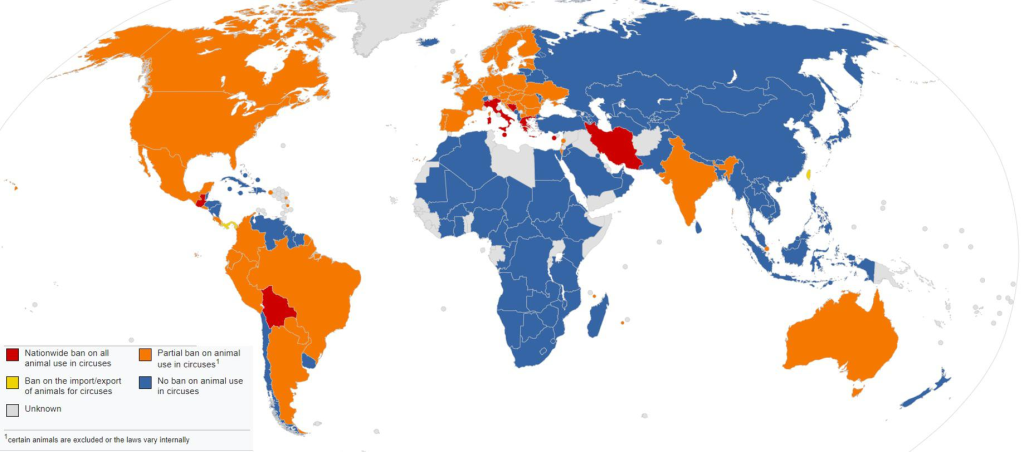American Railroad Circuses
One of the most famous American Circuses was the Ringling Bros. and Barnum & Bailey circus. They were such a phenomenon that their arrival was anticipated to the extent that shops closed, schools were cancelled and factories shut down (Davis, 2002, pp.2). The Circus has been an important part of peoples lives in America since the late 1800s during the depressions (Davis, 2002, pp.8). Even beyond America, Circuses were a form of propaganda and morale boosting in places like Germany during WW2. However, in the modern day, Circuses are much less of sensation, which I believe is in part due to easier access to entertainment in the home as well as increased protests against Circuses with animals due to concerns about animal rights. These ideas have been around since Circuses began, but as recently at 2020 the UK banned the use of wild animals in travelling Circuses (Wild Animals in Circuses Act 2019), which has been suggested since 2012 (Born Free, 2018).

By Svenskbygderna (talk) – Sources used in creating this map:Circus bans (in en). Stop Circus Suffering. Retrieved on 2019-11-03., CC BY-SA 4.0, https://commons.wikimedia.org/w/index.php?curid=91162604
Since Circuses aren’t as popular today, I tried to base my own depiction of Circuses in a time without internet. In America, the largest most popular circuses would be railroad circuses, they were the ones that travelled the most and had a ‘much wider cultural exposure’ (Davis, 2002, pp.11), which would give my game the opportunity to further explore and explain the world in which it is set. These circuses where also known for being diverse, being full of outsiders that don’t fit in to typical society, ‘The railroad circus represented a “human menagerie” (a term popularized by P.T. Barnum) of racial diversity, gender difference, bodily variety, animalized human beings, and humanized animals that audiences were unlikely to see anywhere else’ (Davis, 2002, pp.10). This interacts in a valuable way with the essential experience I am trying to convey within Stellars Circus, since I want to demonstrate the feeling of an unfamiliar place gradually becoming familiar through making connections and friends. However, Davis (2002) also points out that, ‘the circus’s celebration of diversity was often illusionary, because the circus used normative ideologies of gender, racial hierarchy, and individual mobility to explain social transformations and human difference.’ (pp.10) This is an interesting perspective to view the circus’ treatment of both women and sideshow acts of different ethnicities. For example, French Congolese women, referred to as the ‘Ubangi’ women, were in the Ringling Bros’ Congress of Freaks while a sham professor explained them to American audiences by making stories up, such as, ‘…the origins of the lip-stretching practice: supposedly it began years ago to make Ubangi women unattractive to pirates, and over time the result became a mark of beauty.’ (Davis, 2002, pp.135). This idea further separates the white audience from the women, perpetuating lies and misinformation to entertain them, and reinforcing hierarchy, which dehumanises black women.
The theme of discrimination is an important idea for my own game, as I want to emphasise the otherness of the fairies within society and the way their culture is simultaneously treated as a spectacle for human audiences but is also looked down upon and criminalised.